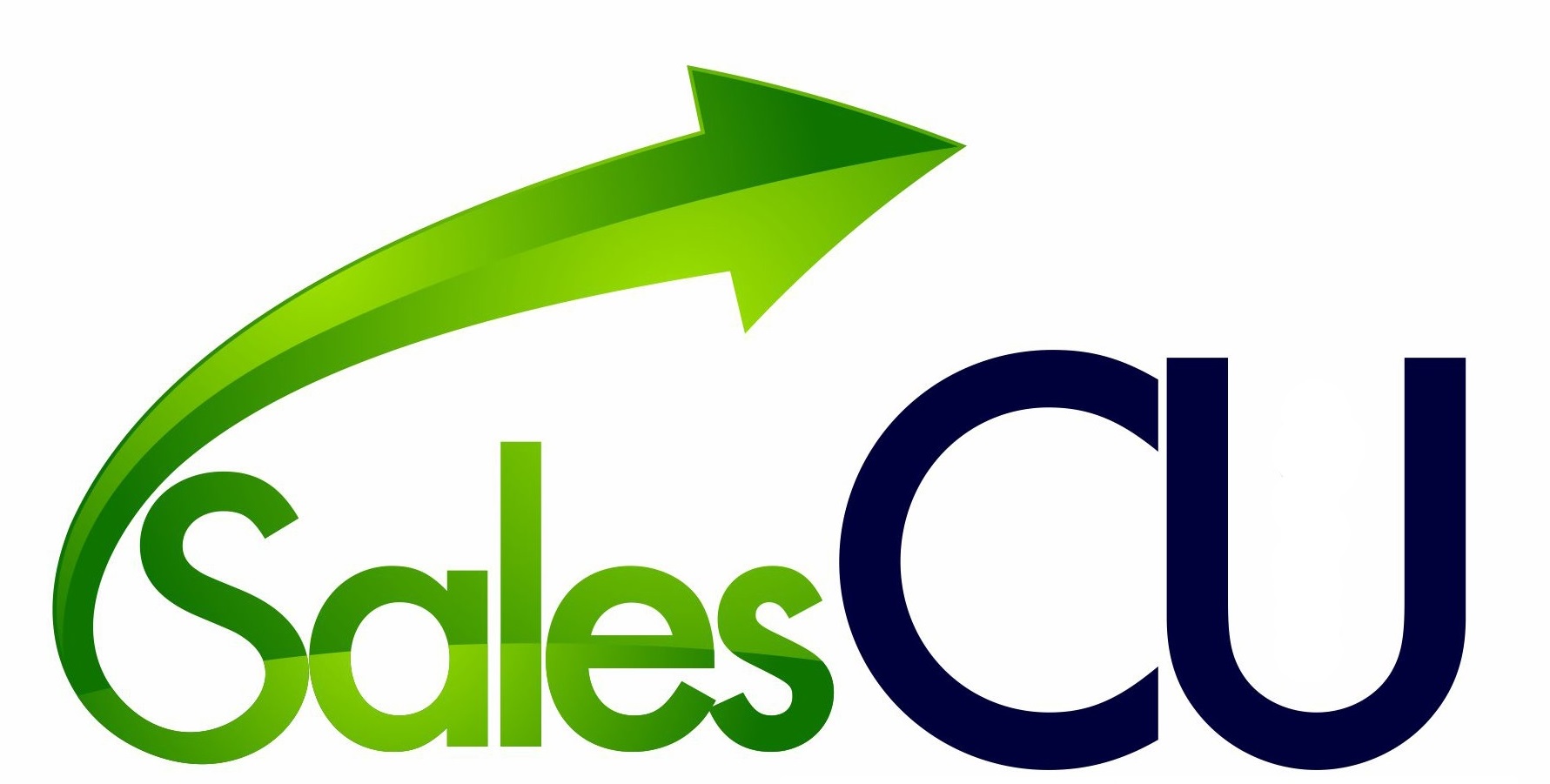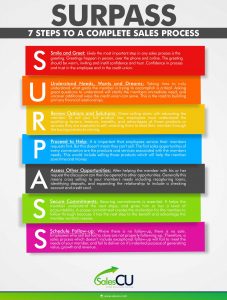A few years ago, I had the opportunity to spend an entire day shadowing team members in a client’s branch network. I do quite a bit of shadowing of team members who have been through my training, but this was a special situation. I was invited to shadow these team members before training was delivered.
I was excited for this opportunity. Particularly, I was interested in the sales mindset, processes, and skills these salespeople used to expand and deepen relationships with their members through everyday conversations.
The credit union arranged the “tour” for the day, visiting three different branch locations and shadowing a total of six team members in various roles. One of the first shadowing sessions was with a teller who had been presented as a top performer that initiates a lot of referrals.
Before she started helping members, I explained that my purpose for shadowing her that day was to observe how she identified member needs and how she was able to create so many referrals. She responded with excitement and we began assisting members.
The first member was missing basic ancillary services such as e-statements and overdraft tolerance. The second member didn’t have a credit card with the credit union. And the third member asked the teller if her mortgage payment, which was on auto pay with a competitor, had come out yet. In each of these situations the teller processed the transaction or answered the question and wished the member a great day.
After helping a long stream of members, we reached a lull. I took the opportunity to debrief with her what I had observed thus far. I first asked how she felt things were going. She indicated that she felt like it was going well, and that it seemed to be a normal day. I shared that I hadn’t noticed her offer any products or services to members yet and asked what she thought she had contributed to that. She simply said “Well, no one asked for anything”.
Intrigued by this response, we continued our conversation along these lines:
ME: Tell me what happens in most member interactions that result in a referral?
TELLER: Well, typically the member tells me they have a need for a mortgage or a business checking, and I tell them who they need to see. And that’s it.
ME: When would you typically recommend a product or service to a member?
TELLER: I recommend products when a member tells me they need something but don’t know how to get it.
For many credit unions, a passive, request based approach, similar to what I observed at this credit union, is how they sell. Some observers may say that this isn’t selling at all. However, that isn’t true. Credit unions are retail sales establishments, which means if there were no sales taking place, the credit union would go out of business. So, yes, selling is happening and the traditional approach even has a name. It’s called reactive selling, or commonly referred to as “Order Taking.”
Order taking, while marginally effective, causes a number of problems for the credit union. Primarily, it slows growth to a snail’s pace that hamstrings revenue. This of course inhibits the overall success of the credit union and its ability to create value in their members’ lives.
The “Order Taker” approach to sales and service is the direct result of the lack of senior leadership setting clear sales expectations for the employees of the credit union. This can be due to there being no sales expectations, unclear expectations, or expectations with no accountability. Additionally, poor training, ineffective coaching, and recognition systems that champion operational excellence also propagate this approach in many credit unions.
While there are many moving parts that are necessary to address to help shift away from the “Order Taker” approach, one powerful tool I recommend all credit unions adopt is a universal sales and service process. Many credit unions have developed their own processes, customized and unique to their membership, history, and culture. At SalesCU, we teach the SURPASS Sales Process.
The SURPASS Sales Process is, of course, an acronym with each letter representing a separate step. The acronym presents the steps in order and acts as a guide for team members to effectively sell in any member interaction. SURPASS stands for:
Smile and Greet
Understand Needs, Wants, and Dreams
Review Options and Solutions
Proceed to Help
Assess Other Opportunities
Secure Commitments
Schedule Follow-up
The SURPASS Sales Process is specifically designed to be used for any member interaction, whether it be at the loan officer desk, teller window, over the phone, or online. It can also be applied and followed in any situation where the member has reached out to the credit union. Examples of a member reaching out may include: a member opening a new product or service, a member depositing a check, or a member making a routine call to the service center for a balance inquiry.
*Get Your free SURPASS Sales Process Card Here*
The SURPASS Sales Process works in each of these scenarios because it doesn’t aim to create a rigid script for each member interaction, but rather it guides a team member through a natural process to obtain a consistent outcome. Let’s take a closer look at each step of the process as well as the training your team members might need in order to execute them.
Smile and Greet
The inestimable value of a first impression makes “the greeting” the most important step in any sales process. Greetings happen in person, over the phone, and online. Every greeting should be warm, inviting, and instill confidence and trust in both the team member and the credit union.
A greeting is part of your credit union’s brand. You can probably think of a business that has a consistent greeting regardless of the location you visit. Impressive right? Why not brand your greetings and create a standard for team members to live up to in your credit union’s sales process?
Understand Needs, Wants, and Dreams
Taking time to truly understand each member’s goals is extremely important. It will mean the difference between establishing a single service relationship with your members and a primary, enduring relationship.
The main skill your team members must understand and religiously practice is the member interview. Often, however, the member interview consists of one question, “So what brought you in today?” Even this question is not effective and likely carries a negative connotative meaning.
The member interview consists of a series of questions that pinpoint the member’s true needs, what he or she wants to accomplish, and how the credit union can help the member get closer to his or her financial dreams. The member interview discovers the member’s motivation, the events that precipitated action, and his or her concerns and expectations. In the member interview, the team member should learn the critical bits of information that will align the right product or service for the member and position additional products and services to sell to the member, ones which he or she may need but not know to ask for.
Review Options and Solutions
Your member should be the one making the decision on the solutions that best meet his or her needs, but only after having been properly educated. This doesn’t mean that the member is the expert or has all of the answers. Your member chose your credit union because you are the expert and partnered with you to be his or her financial advocate. This step in the sales process is where your team members reinforce that this is a partnership and illustrates the immense value membership at your credit union provides to the member.
At this point, team members take the information they’ve gathered during the interview and put it to work aligning the products and services that best fit the member’s unique needs. They take the time to discuss from which features the member would benefit and how a specific solution might give him or her an advantage over another option and even over service from another financial institution. Team members cannot do this, however, unless they have the proper training on the credit union’s products and delivery systems.
Many credit unions provide product knowledge training, but most team members are not being trained on “product sales knowledge.” To help sales team members successfully review options and solutions with a member, they need to know the qualifying factors, features, benefits, and advantages of those products or services they are expected to sell. They also need to understand common concerns a member may have about a product and how to anticipate and address them before the concerns become objections. With this knowledge, team members will have the ability to provide what feels like a customized solution for your member.
Proceed to Help
At this stage in the SURPASS Sales Process, the member has been educated on the available options and has decided on the desired direction. It’s time for the team member to move forward and begin helping the member complete his or her transaction, resolve his or her problem, or start the application for a new account or loan.
At this point, for team members who are eager salespeople, it’s easy to start looking at other sales opportunities; but doing that will inevitably lead to member objections. The member’s goal is to solve his or her current need. This step reminds the team member that it is best to help the member get a solution to the current issue before venturing into any cross–sell discussions. That being said, this doesn’t mean the team member isn’t selling in this step. Actually, it’s quite the opposite.
During the “Proceed to Help” step, team members should focus their sales efforts on any associated ancillary products and services. In fact, this is where team members should up–sell products like online services, direct deposit, overdraft protection, debt protection, extended warranty, and so forth.
Assess Other Opportunities
Once the team member has helped the member with his or her needs, the discussion can then be opened to other noted opportunities. This is the cross–selling step in the sales process. Cross–selling, of course, is the process of discussing other core products the member doesn’t currently have with the credit union, but which will benefit him or her.
Team members should look to cross–sell deposit accounts, checking accounts, credit cards, and especially loan recapture and balance transfers. Ideally, earlier on in the conversation, the team member should have prepared the member for this conversation by noticing a need on the member’s account that the credit union could fill and asking for permission to look at it together once he or she has finished satisfying the member’s original need. This is now the perfect time to bring up those other opportunities.
Secure Commitments
Successful salespeople are great because they know how to get commitments. Often the reason sales fall through is because the team member did not get a clear commitment from the member. Unless driven to close a sale by personal motives, the member will feel no obligation to follow through on a sales conversation.
Securing commitments from the member is an essential step in the sales process. It helps him or her understand the next steps and gain a level of accountability. A proper commitment creates the motivation for a member to follow through because it ties the next step to the benefit and advantage he or she will receive. However, one aspect of a successful sales process that is imperative to remember is that commitments go both ways. Team members who get great commitments and follow-through from the members are also willing to make commitments. They are willing to make all of the necessary commitments to help their members and then they over–deliver on every promise they make.
Schedule Follow-up
The last step in the SURPASS Sales Process isn’t actually the end, but rather the beginning of the next sales discussion. Follow-up is essential for the success of any sales process. In a way, follow-up is a sub–step to commitments, as one of the commitments that will be made is to follow-up.
Follow-up may need to happen with any step in the sales process. For example, when a member doesn’t have time to finish a discussion, doesn’t have everything on hand that is needed to close, or when a step is going to take a few hours or even a few days to complete. When situations like this occur, the team member must schedule follow-up to avoid the sale falling through.
Follow-up doesn’t end once the sales is closed either. After a sale is closed, team members should schedule follow–up to onboard new products and services. Yep, that’s right, I said schedule onboarding. The most engaged and loyal members are those who feel connected to their credit union. Connection occurs through contact and support. Always schedule follow-up with your members.
The SURPASS Sales Process can be followed in virtually any member interaction as a guide to provide exceptional service and capture additional products and services through sales.
If your credit union does not have a formalized sales and service process, I encourage you to find one that fits your brand. A defined process will improve the sales and service results on the front line and in other areas of the credit union. Most importantly, it will help to develop the kind of relationships your members want to have with their credit union.
[/et_pb_text][/et_pb_column][/et_pb_row]





